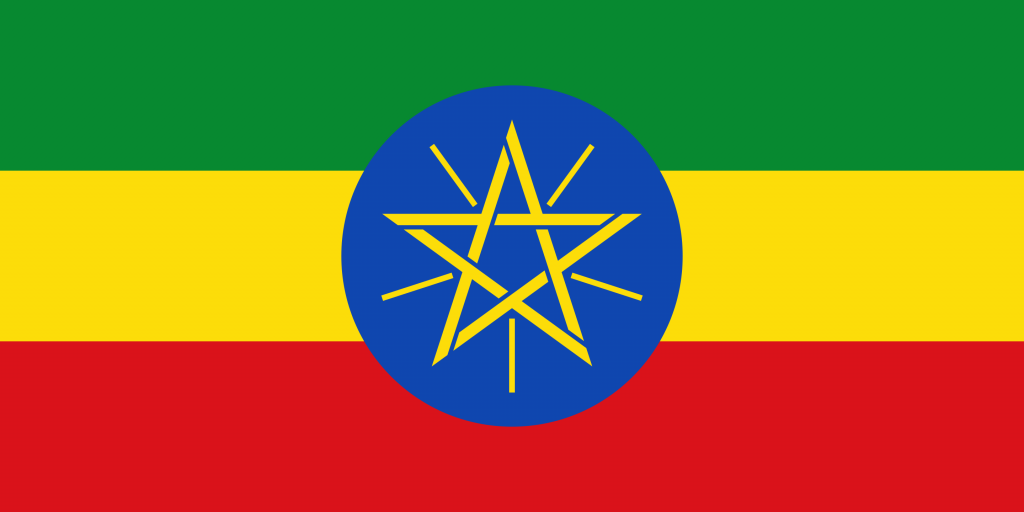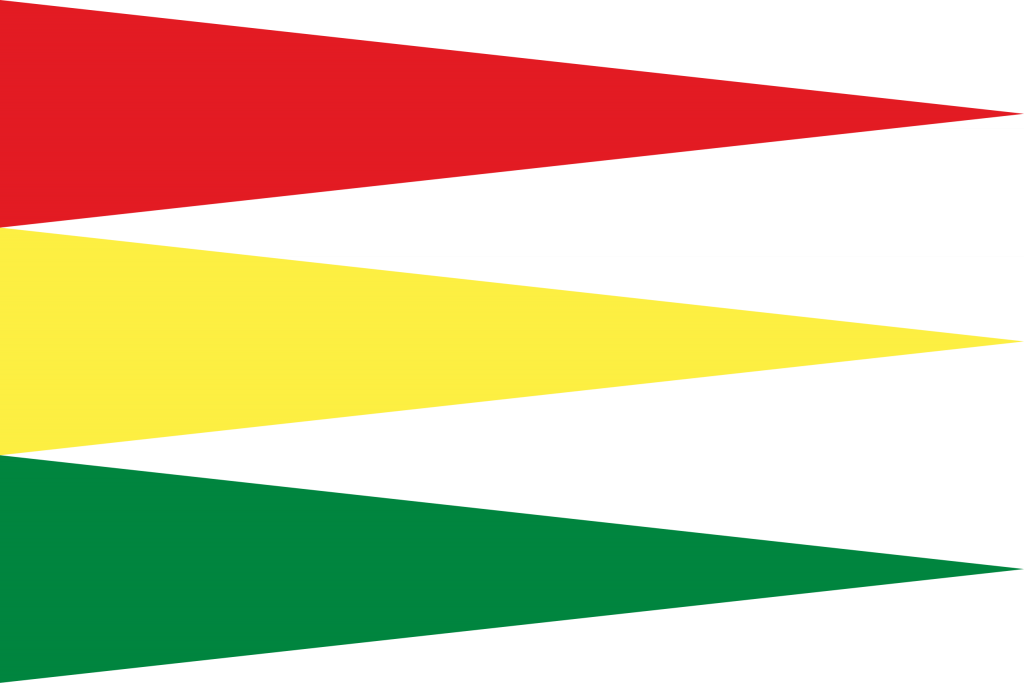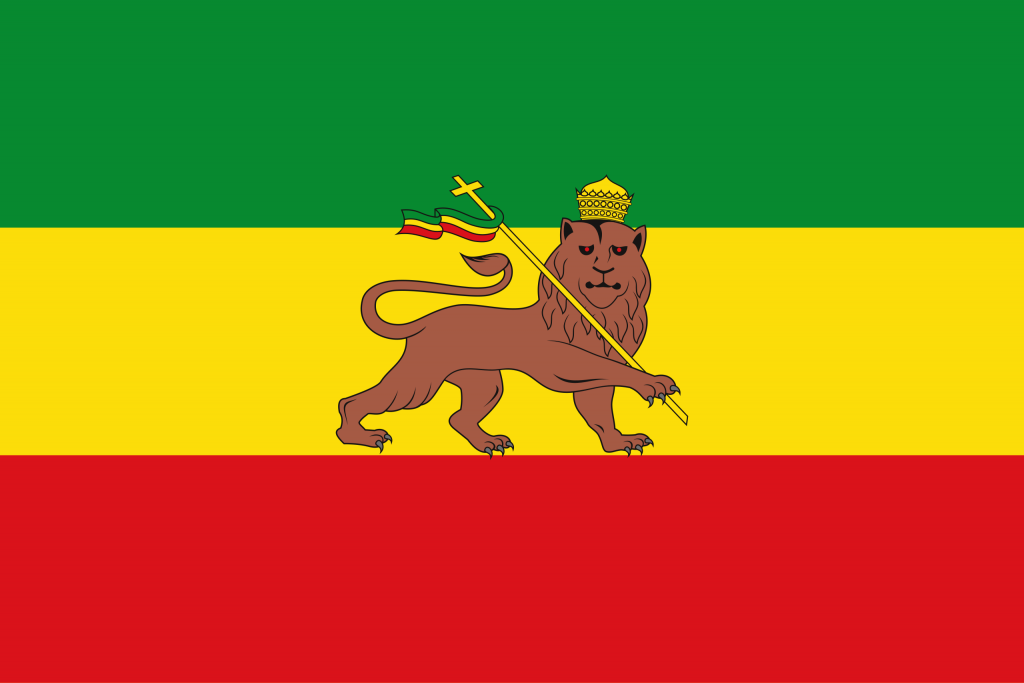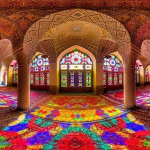The Ethiopian flag isn’t just a fabric waving in the wind; it’s a story. A story of fight, hope, and pride woven into every stripe. The green, yellow, and red, with that blue circle and golden star in the middle, are more than colours. They’ve inspired movements, stood for freedom, and shown the world that Ethiopia has always marched to its own beat.

The design of the flag of Ethiopia
When you first look at the Ethiopian flag, you’re immediately met with bold, vivid colours arranged in horizontal stripes. Green at the top symbolises the land fertility, hope, and richness of Ethiopia’s highlands and agriculture. Yellow in the middle stands for harmony, peace, and religious freedom. And red at the bottom, a reminder of sacrifice and the long struggle for sovereignty.
These are the classic Pan-African colours, and Ethiopia was among the first to use them. As African nations gained independence throughout the 20th century, many adopted Ethiopia’s colours as a nod to unity and liberation.
At the centre of the flag is a blue disc with a golden, radiating star. This emblem, added in 1996, sets the current version apart from earlier flags and holds profound meaning. The five-pointed star stands for unity among all Ethiopian ethnic groups, while the rays extending from it symbolise a bright future for the country. It’s a reminder: even though Ethiopia is made up of many groups, they are one. And last, the blue background represents peace and the desire for harmony among its diverse population.
The history of the Ethiopian flag
Ethiopia is one of the few countries in Africa that was never colonised. Because of this, Ethiopia has had its own national flag for over a century, long before many other African nations gained independence.
There were early flags in the area, like those from the Aussa Sultanate in the late 1500s, red, yellow and green pennants. That was a nearby state, not Ethiopia itself, but it’s part of the history around the Horn of Africa.

The tricolour of green, yellow, and red was first introduced in 1897, under Emperor Menelik II, shortly after Ethiopia’s victory over Italy at the Battle of Adwa in 1896. This flag, with horizontal stripes, came to symbolise independence and African pride.
During the reign of Emperor Haile Selassie, the flag often showed the Lion of Judah holding a cross, reflecting the monarchy and Ethiopia’s connection to the Ethiopian Orthodox Church.

After the 1974 revolution, the monarchy was overthrown, and the Derg regime removed the imperial lion and introduced a new emblem representing Marxist values. Later, during the People’s Democratic Republic of Ethiopia (1987-1991), more changes were made to reflect the state’s socialist orientation.
In 1996, under the current federal government, the present-day flag was adopted. It kept the traditional green-yellow-red stripes but added a blue disc with a yellow star in the centre.
Though the emblems have changed with power shifts, the tricolour has remained constant, marking Ethiopia’s deep-rooted identity, history, and resilience.
The cultural significance of the Ethiopian flag
In Ethiopia, the flag is not just raised, it’s felt. Woven into daily life and national memory, it speaks to who the people are and where they’ve come from.
You’ll see it flying high on days like Adwa Victory Day, when Ethiopians remember the battle that kept their country free from colonisation. It appears at church gatherings, New Year celebrations, school ceremonies, and football matches, anywhere people come together with pride.
For many, it’s a thread that ties the old and the new. The colours recall ancestors who defended the land, and the star in the centre points to a future built on equality and shared roots. No matter where you go in the country, from crowded city squares to remote highland villages, the flag is there, a quiet but steady reminder of belonging, struggle, and hope.
Conclusion
The flag of Ethiopia carries the weight of generations. It isn’t just flown on official buildings or waved during parades; it lives in the hearts of the people.
YPT can take you on a journey that lets you discover Ethiopia in a way few ever do. Beyond the usual sights, you’ll dive deep into its rich history, vibrant cultures, and breathtaking landscapes. Whether it’s meeting welcoming locals, exploring untouched nature, or tasting traditional flavours, YPT transforms your trip into a true adventure that stays with you long after you leave.
Additionally, YPT can also take you to explore many fascinating countries across the vast and bountiful African continent. More information can be found on our African tours page.





